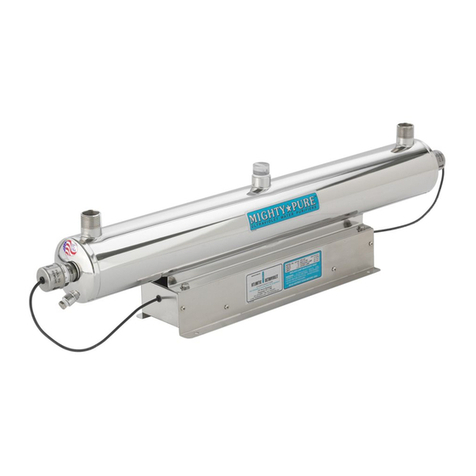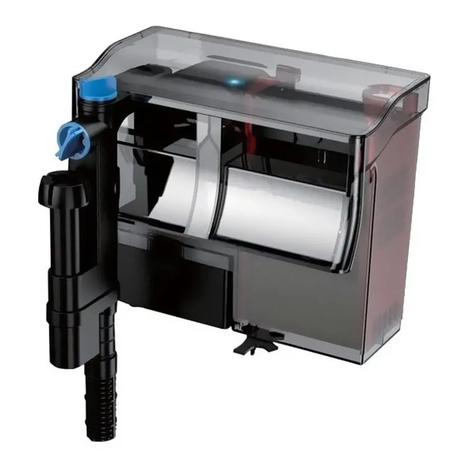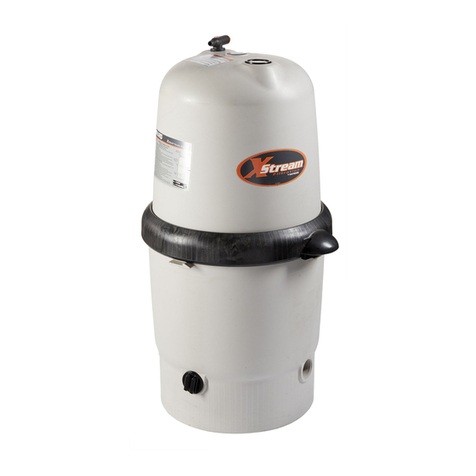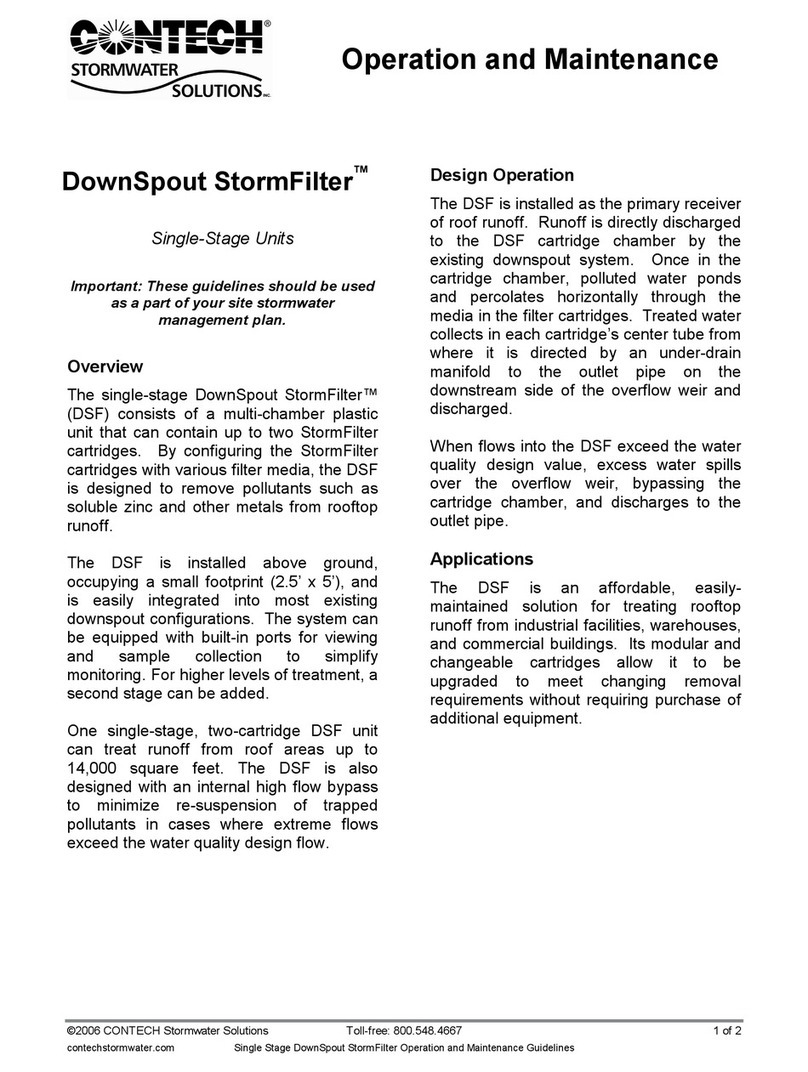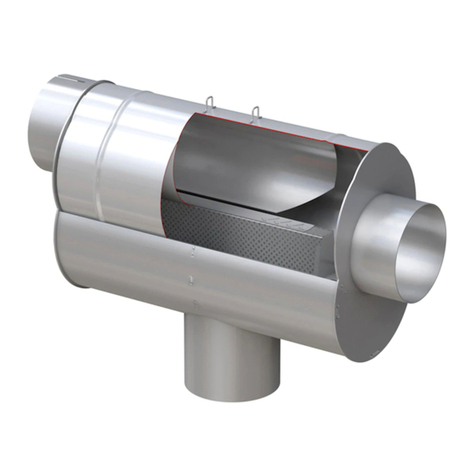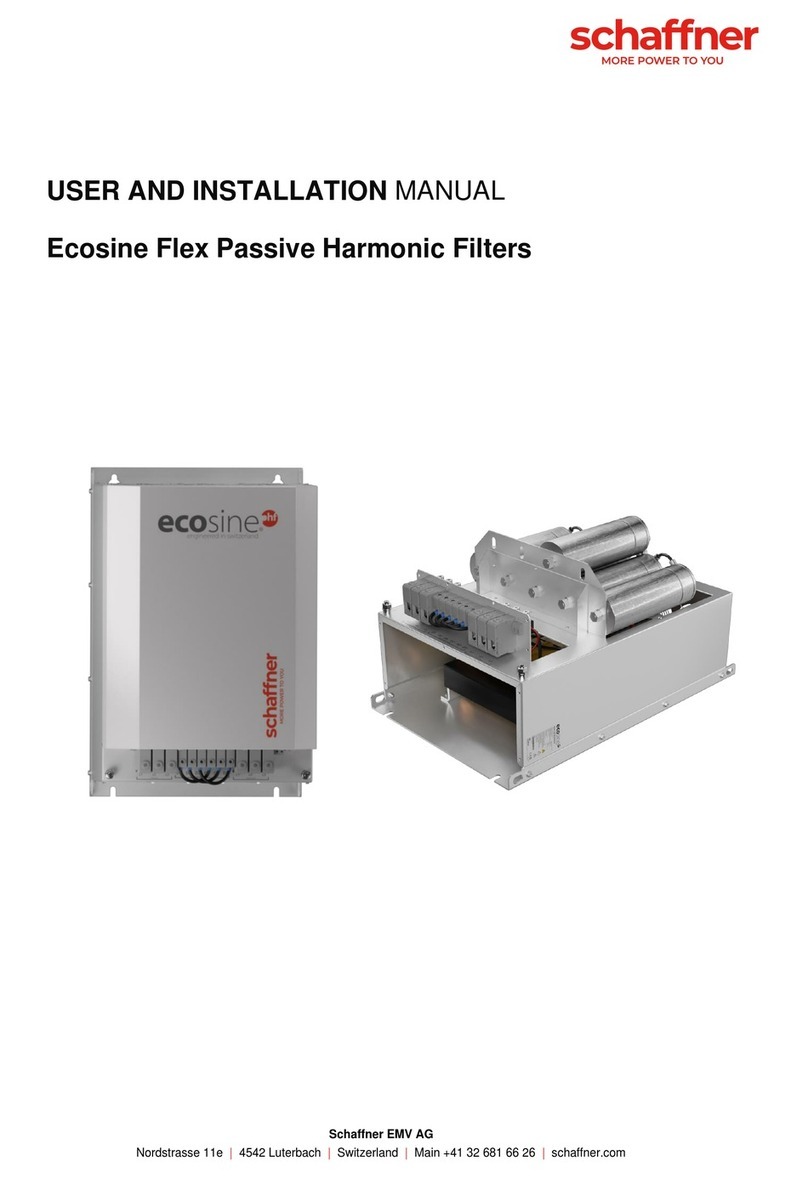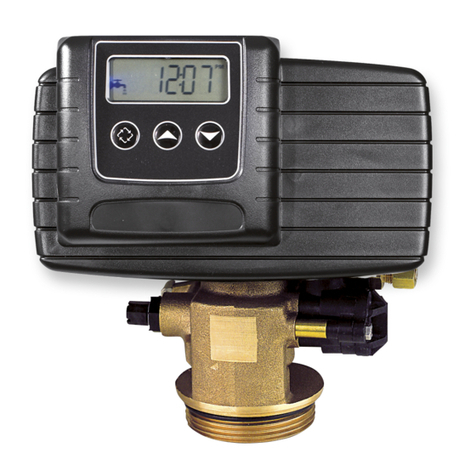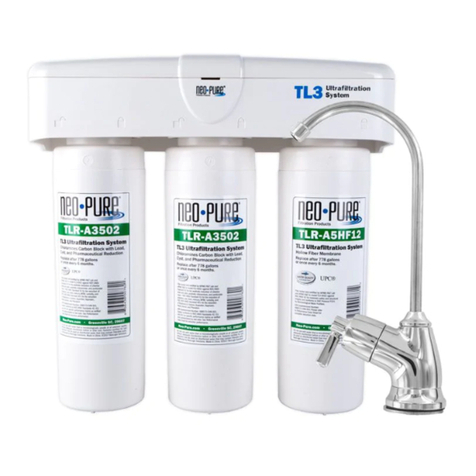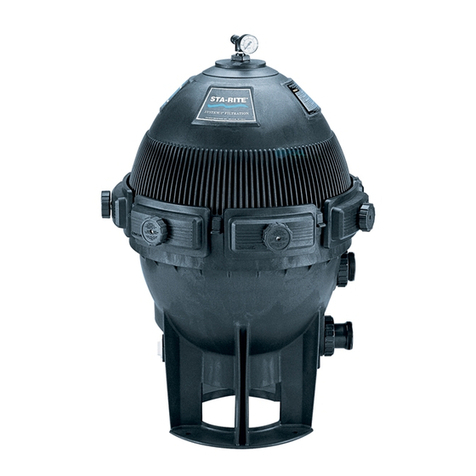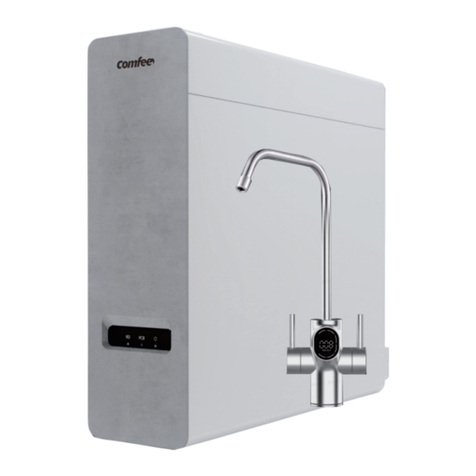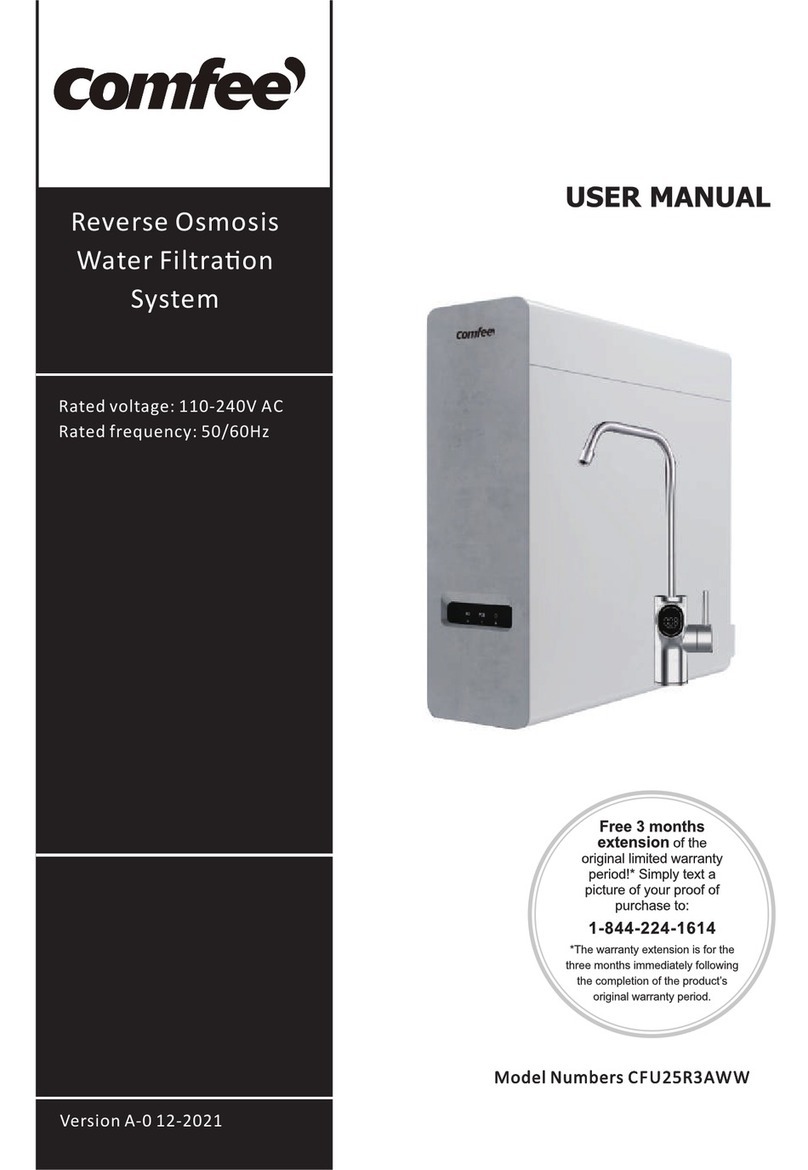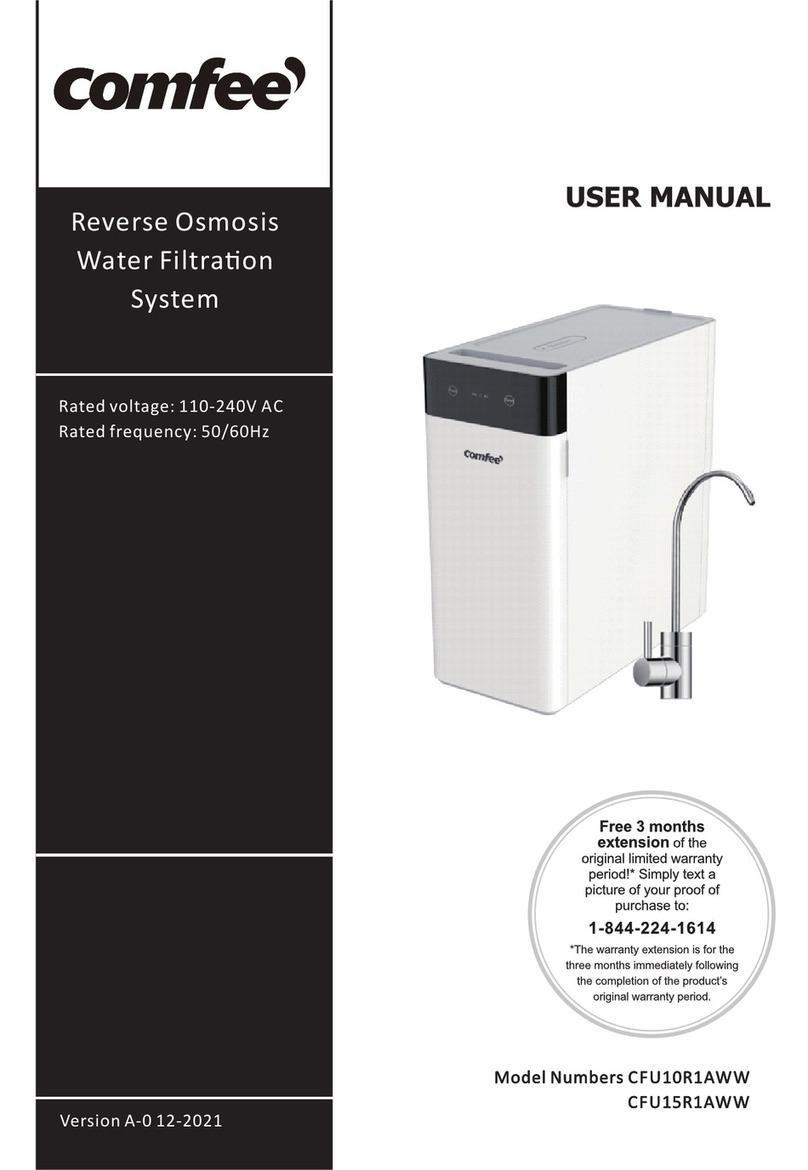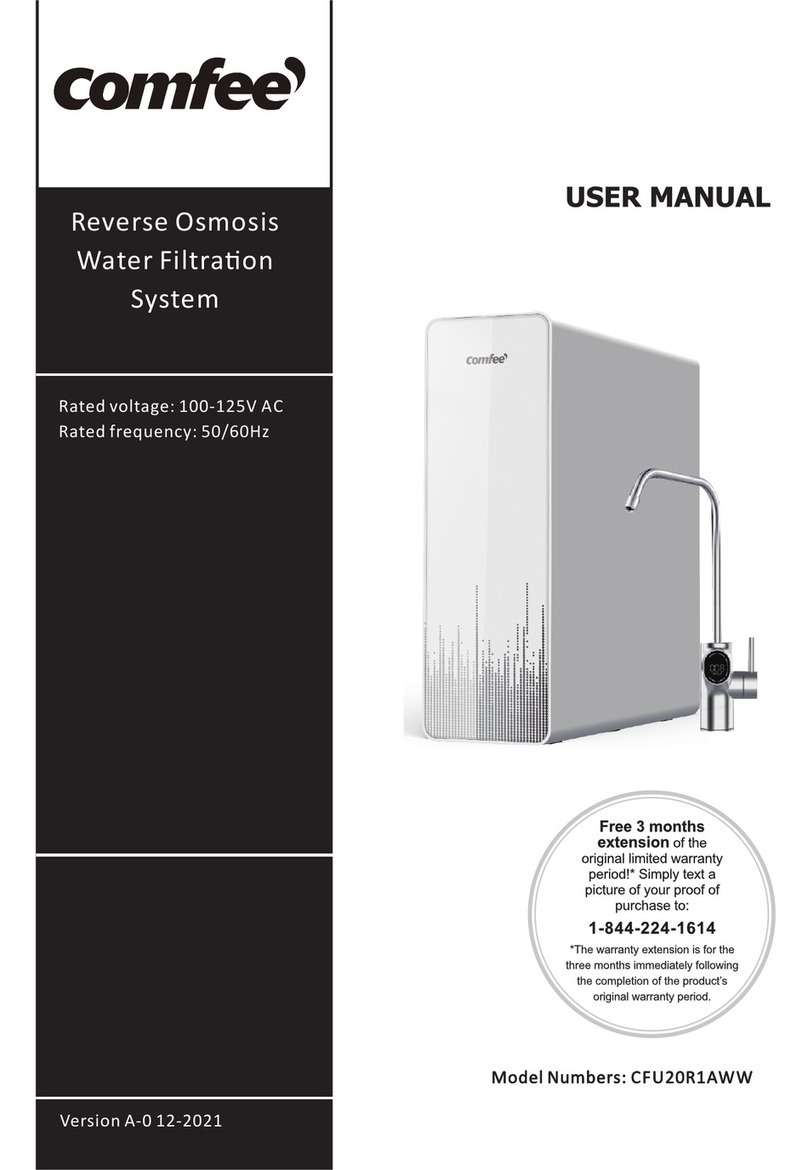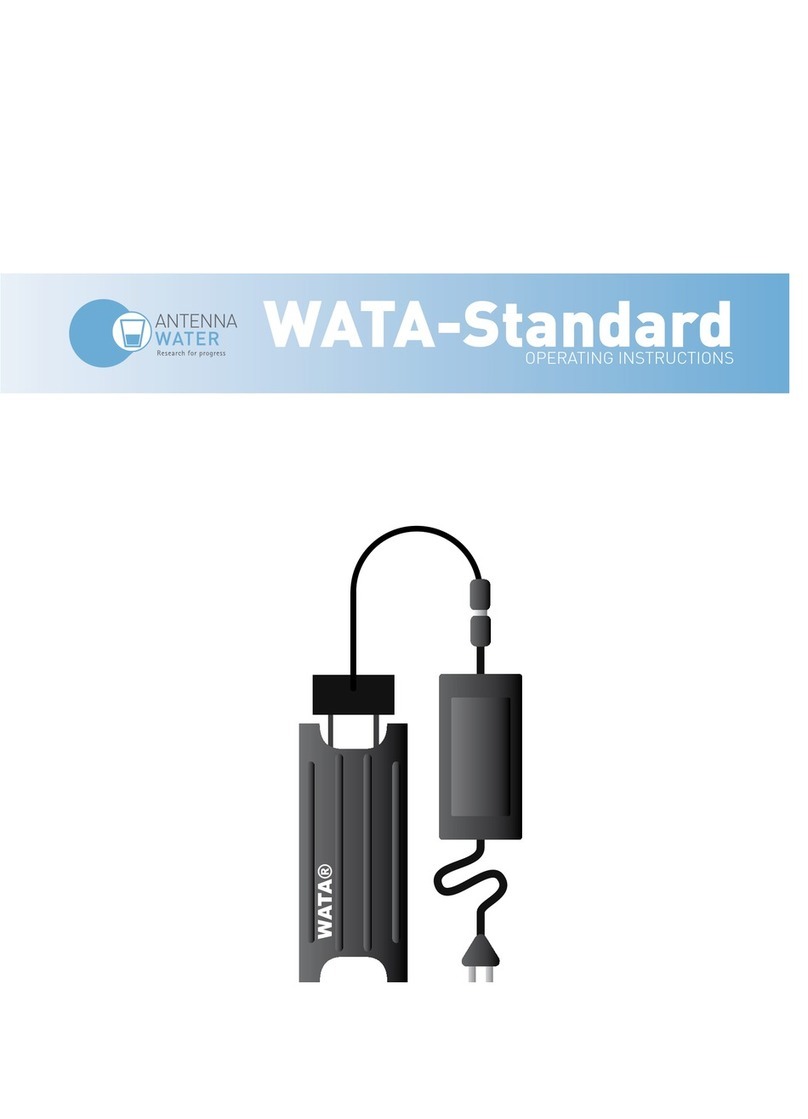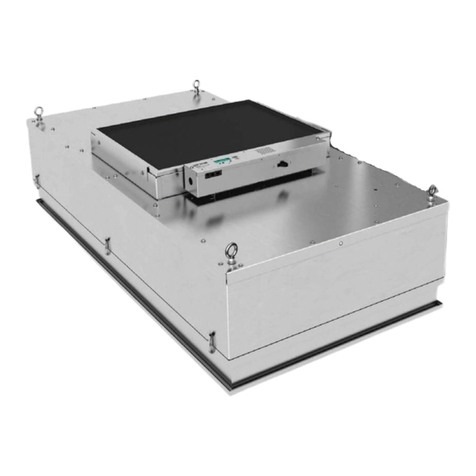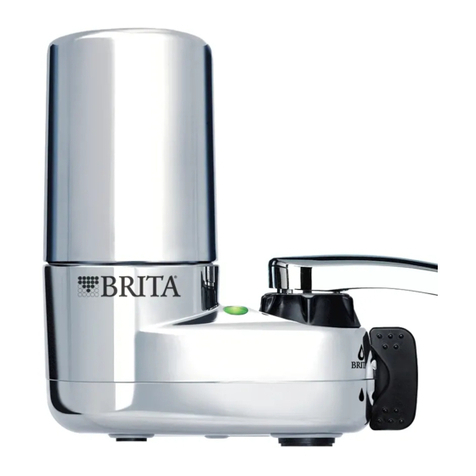
6
The drain saddle adapter is included with your RO
system. The drain saddle adapter will fit around a
standard 1-1/2” drain pipe.
Shown in Figures 6, 7, and 8, you will install the drain
saddle adapter above the P-trap. Note: If your sink is
equipped with a garbage disposal drain, do not install
the drain saddle adaptor to this drain point. Please
inspect the drain pipe for corrosion and replace, if
necessary.
1. Test fit the drain saddle adaptor around the sink drain
to make sure will it fit properly. The drain saddle adaptor
should be installed approximately 6-inches above the
P-trap, see Figure 6.
2. Make sure the quick connect fitting on the drain
saddle adapter is installed in the direction toward the RO
system for ease of installation of the PE tube.
3. With a pencil, carefully scribe the drain pipe to mark
the location of where the PE tube will connect. See
Figure 7 for location of quick connect fitting.
4. After making your mark on the drain tube, remove
drain saddle adaptor and drill a 3/8” diameter hole in the
drain pipe. Note: Do not drill with the drain saddle
adaptor attached, it may damage the quick connect
fitting. Only drill through one side of the drain pipe.
5. Remove any loose plastic and line up the drain saddle
adapter with the hole you just drilled.
6. Place the two halves of the drain saddle adaptor back
onto the drain pipe. Now fasten the nuts and screws.
Tighten both sides equally to secure the drain saddle
adaptor onto the drain pipe. Do not overtighten. See
Figure 8.
7. Hold off on connecting the “RED” PE tube to the quick
connect fitting on the drain saddle adapter, this water
connection will be made in Step 6 – Connect PE Tube.
The drain saddle adapter is needed for the drain water produced from the Reverse Osmosis
Filter. Please make sure the drain saddle adapter is located above the P-trap, as shown in
Figure 6 and do not connect or install the drain saddle adapter on a drain-line coming from a
garbage disposal.
You will need to select a location to install the reverse osmosis faucet. In most kitchen
installations, the spray hose or soap dispenser is removed and replaced with the RO faucet.
The hole size must be 1-1/4” in diameter. If a spray hose or soap dispenser is not available, you
will need to either drill a hole in the sink or a new hole in the countertop, next to the sink. Note:
When installing the RO faucet in the sink or countertop, please consider hiring a
professional to drill the holes. Drilling surfaces made of stone or solid surface materials
such as granite, marble or plastic resin product, or sinks made of porcelain or stainless
steel may cause permanent damage or irreparable damage to the sink or countertop
surface.
Figure 6
Figure 8
Figure 7
P–Trap
Single Basin
Sink
Double Basin Sink
Under the Sink Installation
Drain Saddle
Adapter
Drain Saddle
Adapter
Garbage
Disposal
Nuts Sink Drain Pipe
3/8” Quick
Connect
Fitting
Drain
Adaptor
Halves
3/8” Hole - Do not drill
through Q.C. Fitting
P–Trap
Do not install drain
adaptor on a line coming
from a garbage disposal
INSTALL DRAIN ADAPTOR
STEP 2 – Install Drain Saddle Adapter
STEP 3 – Install Reverse Osmosis Faucet
